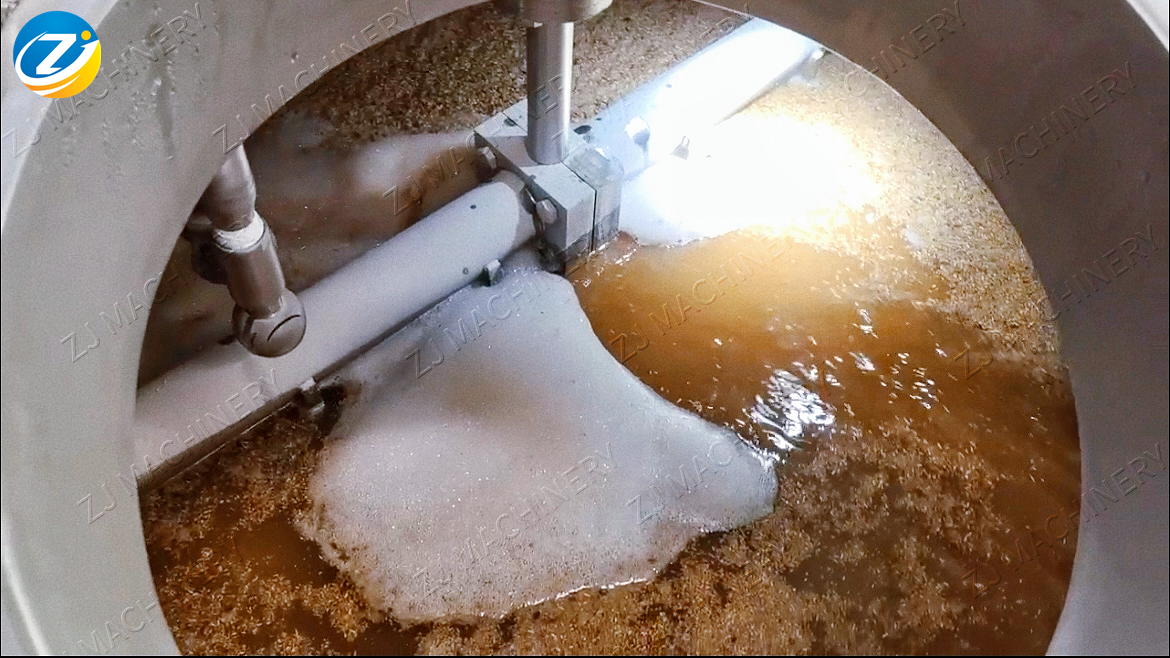Every whiskey distillery has at least one milling machine, but milling isn't just important because it's the first step in the production line—the coarseness of the ground malt directly impacts mashing and wort filtration, which in turn affects fermentation and the distillation of new-make spirit. In essence, it’s the foundation of everything.
The crushed malt is collectively called grist, consisting of husks, coarse grits, fine grits, and flour. While all grains are crushed during milling, care must be taken to minimize damage to the husks. Intact husks act as a natural filter bed on the false bottom of the mash tun, aiding in efficient wort separation. The ratio of coarse grits, fine grits, and flour must be perfectly balanced. Too many fine particles can clog the pores of the filter plate, making wort separation difficult. Excessive flour may clump in hot water, hindering dissolution. Each distillery must fine-tune the milling ratio to match its specific mash tun for optimal performance.

While milling is crucial, mashing is where whiskey-making truly begins for a distillery. The efficiency of mashing determines both the alcohol yield and overall quality. Poor mashing doesn’t necessarily mean the new-make spirit will have off-flavors, but it will inevitably result in lower alcohol output.
During malting, barley undergoes modification, which partially converts starches into fermentable sugars. The rest of the process mainly breaks down the cell walls and protein structures surrounding the starch granules. Mashing reintroduces water to fully convert these freed starches into sugars.
For malt whiskey, the grain used is already modified during malting, so gelatinization happens at relatively low temperatures. The enzymes responsible for conversion only require precise conditions—temperature, pH, mash thickness—and sufficient time to work effectively. However, grain whiskey mostly (85–90%) consists of unmalted grains like corn and wheat, where starch is tightly locked within cell walls and protein matrices. These require high temperatures for gelatinization before enzymatic conversion can occur.

Whiskey and beer fermentation share many similarities, but the key difference lies in the wort preparation: beer wort is boiled before fermentation to kill potential contaminants, which also deactivates residual amylase enzymes. In contrast, whiskey wort isn’t boiled, allowing the enzymes to remain active during fermentation, continuing to break down larger carbohydrates into smaller, fermentable sugars. This distinction is especially important for distillers sourcing whiskey still supplies, as the choice of equipment must support enzymatic activity throughout the unboiled fermentation process.
The vessel where yeast is cultivated in a distillery is called a washback. The distillery must provide optimal conditions—nutrient-rich wort, proper sugar concentration, pitching temperature, and fermentation duration—to maximize yeast efficiency. Generally, fermentation progresses through four stages:
Since wort is a nutrient-rich medium vulnerable to microbial competition, yeast must be pitched quickly to prevent wild bacteria (especially lactic acid bacteria) from dominating. Delay can result in bacterial contamination, which not only competes for sugar but also lowers pH by producing excess acids. This leads to incomplete fermentation, reducing alcohol yield and altering flavor. The more yeast pitched, the faster fermentation proceeds.
Within hours of pitching, yeast rapidly multiplies thanks to oxygen, sugars, and nutrients. After two or three generations, oxygen depletes, and CO₂ builds up on the surface, cutting off further oxygen supply. The yeast then shifts to anaerobic fermentation.
This is the main alcohol-producing phase, but if the yeast only produced ethanol, whiskey wouldn’t develop its rich array of flavors. Yeast also metabolizes other malt compounds, creating congeners—trace chemical byproducts responsible for most of whiskey’s aroma and taste.
When sugars are exhausted, fermentation slows and stops, with alcohol levels stabilizing. An efficient distillery maintains a tightly scheduled rhythm—mashing, fermenting, distilling—each stage interlocked. Fermentation is the longest step in the process, which is why distilleries typically have the most washbacks to ensure continuous production.
